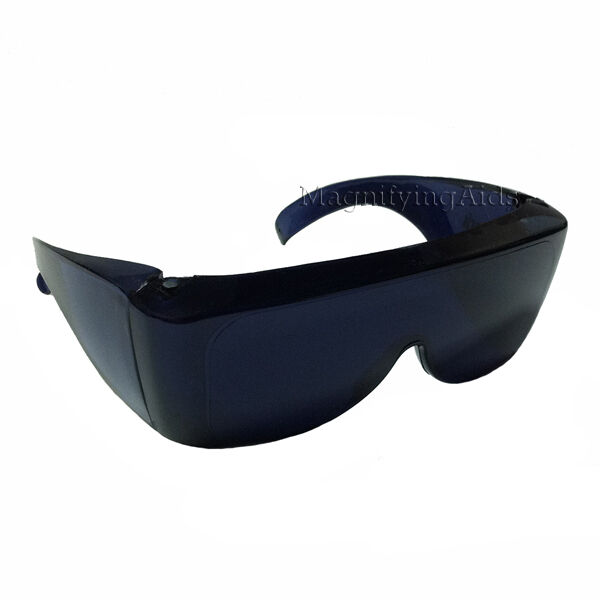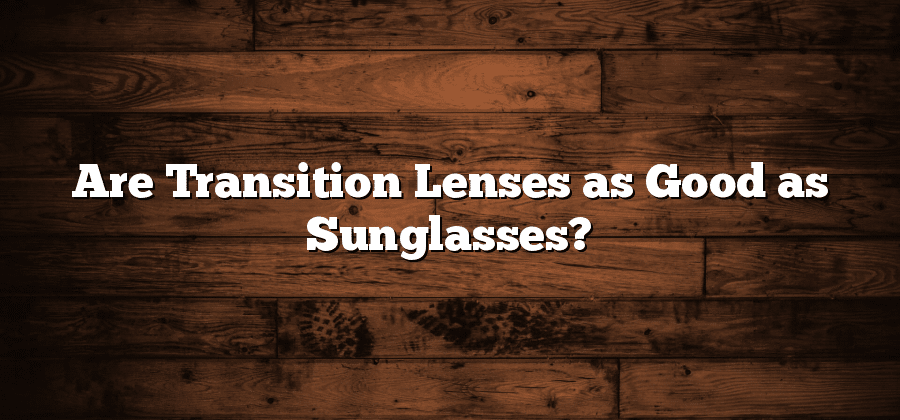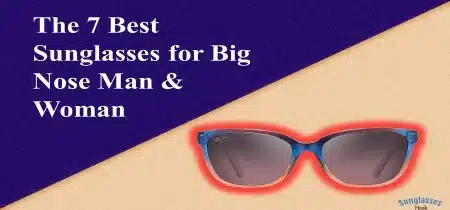Eyewear technology has made significant strides over the years, introducing innovative concepts to ensure optimal eye protection. Two of the most popular eyewear options for protection against harmful UV rays include sunglasses and transition lenses, also known as photochromic lenses. These adaptive lenses darken upon exposure to UV light, transforming into sunglasses when outdoors and reverting to clear lenses indoors. However, the question arises, “Are transition lenses as good as sunglasses?” This post delves deep into understanding and comparing these two eyewear options, highlighting their benefits, limitations, and suitability for various contexts.
Understanding Transition Lenses
What are Transition Lenses?
Transition lenses, also known as photochromic lenses, are eyeglass lenses that automatically darken in response to sunlight. They incorporate special compounds like silver chloride or silver halide, which darken when exposed to UV rays and lighten in their absence. Thus, these lenses provide a convenient solution for individuals seeking an all-in-one eyewear option.
Benefits of Transition Lenses
Transition lenses offer several benefits. They provide continuous eye protection, transitioning seamlessly between indoor and outdoor environments. They reduce glare, increase visual comfort, and minimize the harmful effects of UV radiation. Since they adjust to varying light conditions, they are particularly useful for individuals who frequently move between indoors and outdoors. Furthermore, they eliminate the need to switch between regular eyeglasses and sunglasses, which is not just convenient but also cost-effective in the long run.
Limitations of Transition Lenses
Despite their benefits, transition lenses have some limitations. Their performance depends significantly on temperature; colder temperatures facilitate faster and more pronounced darkening than warmer conditions. Additionally, they might not darken adequately inside vehicles, as most car windshields already have UV protection. Some users also find the time taken to transition from dark to clear (or vice versa) relatively slow, though advances in technology are gradually mitigating this issue.
Sunglasses: A Traditional Yet Reliable Option

What are Sunglasses?
Sunglasses are a type of protective eyewear designed to prevent bright sunlight and high-energy visible light from damaging or causing discomfort to the eyes. They can also serve as a visual aid, as various types of specialty sunglasses are fitted with corrective lenses. Sunglasses are particularly beneficial in situations of intense light conditions, such as water and snow sports, where the reflected light can cause glare.
Benefits of Sunglasses
Sunglasses provide several advantages, including protection against UV rays, reduction in glare, and prevention of eye strain. They are available in various styles, offering different levels of protection, and can be customized with prescription lenses. Polarized sunglasses, a popular variant, significantly reduce glare, making them ideal for activities like driving or fishing.
Limitations of Sunglasses
Despite their advantages, sunglasses have limitations. Unlike transition lenses, they don’t automatically adjust to changing light conditions, which can be inconvenient for people constantly moving between indoors and outdoors. Sunglasses users also often need to carry around two pairs of glasses if they require prescription lenses for vision correction.
Comparing Transition Lenses and Sunglasses
Versatility and Convenience
When it comes to versatility and convenience, transition lenses outshine sunglasses. They eliminate the need to carry two pairs of glasses, seamlessly adjusting to changes in lighting conditions. However, if most of your time is spent in intense light conditions, sunglasses may be a better option.
Performance in Different Conditions
In terms of performance in varying conditions, sunglasses provide constant protection regardless of temperature changes. They also tend to work better for water and winter sports, where reflected light can cause significant glare. On the other hand, transition lenses may not darken adequately in hot weather or inside vehicles due to UV protection on windshields.
Style Factor
In terms of style, sunglasses arguably offer a wider range of designs, colors, and frames, allowing users to express their personal style more distinctly. Transition lenses, while stylish in their own right, may not offer the same level of aesthetic versatility.
Conclusion
To sum up, the choice between sunglasses and transition lenses largely depends on an individual’s lifestyle, preferences, and specific needs. Transition lenses are ideal for those seeking convenience, adaptability, and an all-in-one solution for eye protection. Sunglasses, however, offer better protection in high-glare environments and often present a wider array of design options.
It is crucial to remember that regardless of the type of eyewear chosen, ensuring it offers adequate UV protection is paramount. Always consult with an eyecare professional to make the best choice for your specific needs and circumstances.



Recent Comments